The Big Five
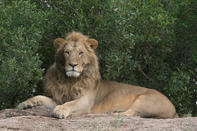
The Big Five are the most well-known animals in South Africa. Not only will you find them in the bushveld, but their faces are printed on the country’s money...how’s that for being a celebrity? These animals are as majestic as they are famous, and tourists from all over the world visit South Africa to see them in real life, and with good reason!
The elephant, lion, rhino, leopard and buffalo are beautiful mammals with unique characteristics. They represent the romanticism of a safari experience in the South African bushveld, as tourists usually come to Africa for the purpose of seeing these magnificent creatures up close.
The large elephant is extremely intelligent and it’s fun to watch as the herd goes down to the waterhole to drink, frolicking in the mud and heaving their large trunks to break off tree branches to eat. The roaring lion is truly the king of the bushveld, and it’s quite a sight to watch it stalking its prey effortlessly over the grass plains.
The rhino, which is almost extinct, has extraordinary horns and a famously bad temper, so spotting a mother with her baby is a great photographic moment. The elusive leopard is often harder to spot but is usually lazily draped along a tree branch, and is for sure a scene stealer during nighttime safaris. The buffalo is not the most majestic animal, but you’ll find herds of them grazing and lifting their head at the sound of a safari vehicle approaching.
The Big Five have become synonymous with African wildlife, and photographing these famous animals is definitely on the bucket list of many tourists.
Quintessentially African
There are numerous other South African wildlife that forms part of the ‘quintessentially African’ stream of mammals. Other large animals include giraffe, cheetah, hippo, zebra and kudu. They inhabit various of South Africa’s diverse landscapes, and tourists are sure to see at least two or more of these beautiful creatures in the bushveld.
There has also been an increased appreciation of lesser known animals such as the hyena, wildebeest, meerkat, aardvark and jackal. They form part of the backbone of South African wildlife, and are frequently sighted on safari.
Sighting African birdlife is another exciting part of the safari experience. The country has a great variety of bird species that will entice any avid twitcher. South Africa is home to an estimated 850 species of migrant and endemic birds, so you really can’t go wrong with embarking on a bird watching safari in any province. There is the Big Six of birds to tick off your list: martial eagle, kori bustard, ground hornbill, Pel's fishing owl, lappet-faced vulture and saddle-billed stork.
Last but not least, the insects that call the country home might not be the most talked-about sighting on safari, but it’s still an interesting experience. The Big 12 are a collection of African insects selected by the Entomological Society of South Africa: Giant dragonfly, Table Mountain flightless cockroach, termite, bladder grasshopper, giant stick insect, giant praying mantis, giant water bug, giant ant lion, giant dung beetle, giant tachinid, mopane worm and giant carpenter bee.
Wherever you find yourself in South Africa, you are guaranteed to see some amazing wildlife. Make sure you have your camera (or smartphone) and binoculars on hand to get the most out of your safari experience.
Protected Animals
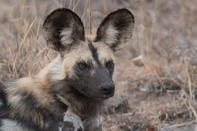
Due to increased human activity in nature, a lot of South Africa’s indigenous animals only have populations in conservation areas and protected game reserves. Many species’ natural habitats are under threat, so it has become increasingly important to protect and conserve these habitats to ensure the animal’s population does not dwindle.
Luckily, tourists are still able to experience the beauty of the country’s protected animals. Nocturnal bushbabies, vervet and Samango monkeys, as well as chacma baboons mostly reside in protected areas on the Cape Peninsula; the wild dog is one of South Africa’s most endangered species but can still be spotted in small numbers in northern KwaZulu-Natal, Limpopo, the Kalahari and the North West Province; and rhinos are specifically endangered due to increased poaching, so they are scattered amongst the North West, Mpumalanga and Limpopo provinces. Other indigenous animals like the bat-eared fox, springbok and Cape clawless otter have larger numbers that reside in various provinces.
When visiting South Africa in pursuit of animals, it’s important to realise that many of them are endangered and need to be protected from loss of habitat, negative human activity and the effects of climate change. Thus, viewing them responsibly and not contributing to their destruction is a key point for many nature and game reserves that house these animals.
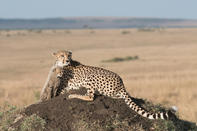
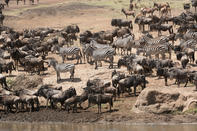
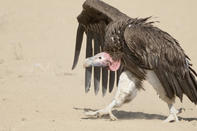
 The Big Five (actually six) are: Lion (Panthera leo), African or Cape Buffalo (Syncerus caffer), Leopard (Panthera pardus), Black Rhino (Dic...
The Big Five (actually six) are: Lion (Panthera leo), African or Cape Buffalo (Syncerus caffer), Leopard (Panthera pardus), Black Rhino (Dic... Learning about the mammals of South Africa is now so much easier for all South Africans - SouthAfrica.co.za is an excellent source of inform...
Learning about the mammals of South Africa is now so much easier for all South Africans - SouthAfrica.co.za is an excellent source of inform...